#but this one is by arthur rackham
Text


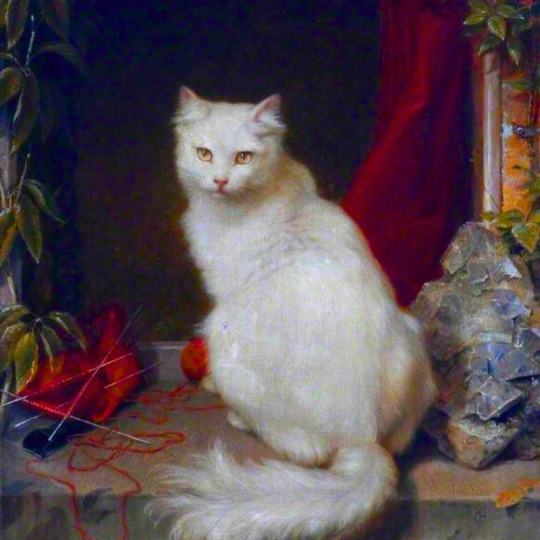





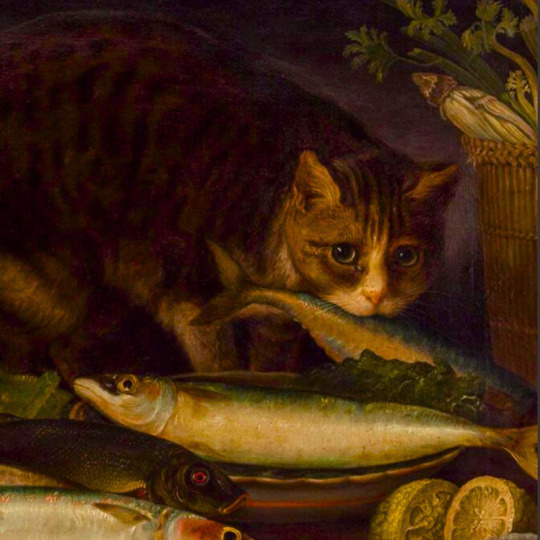


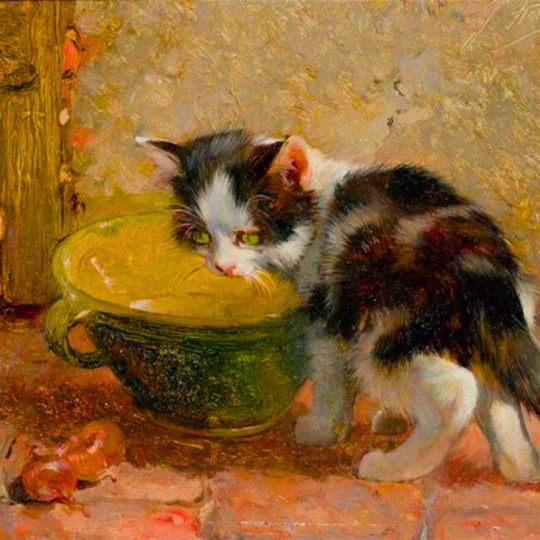
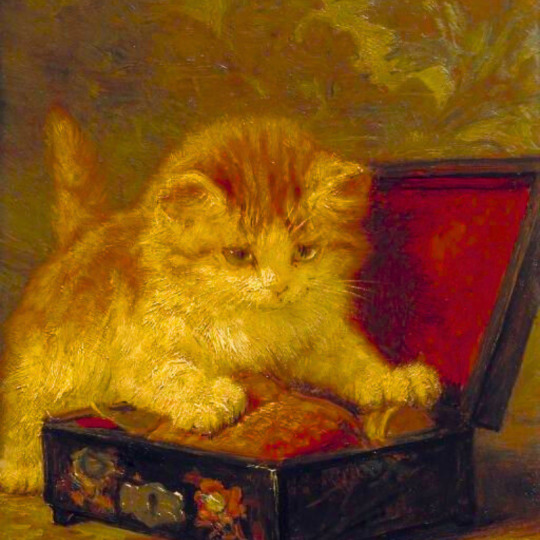
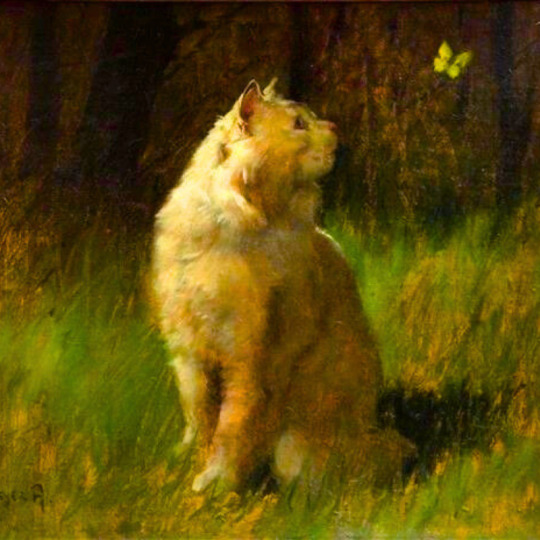
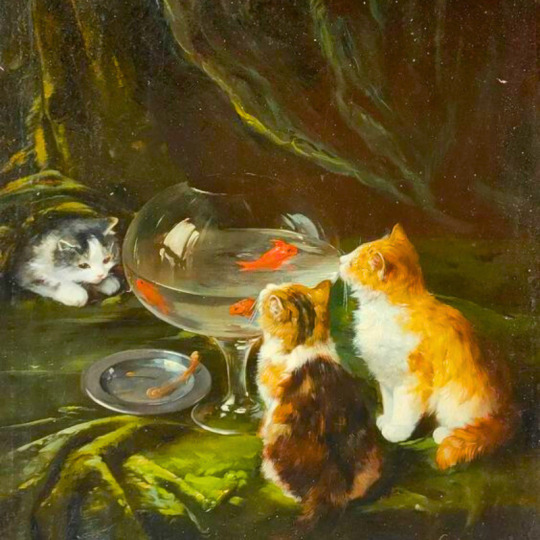
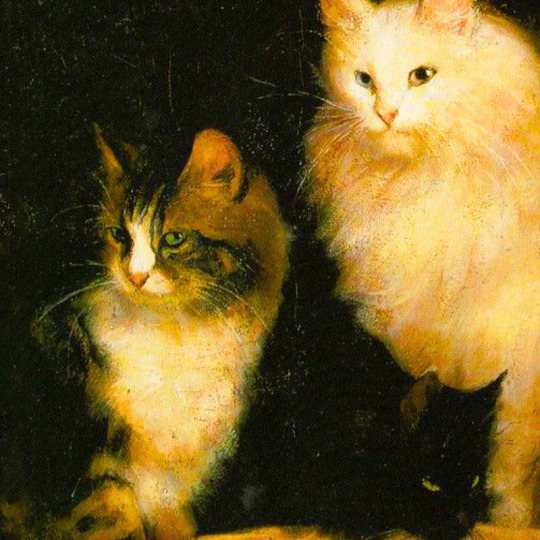
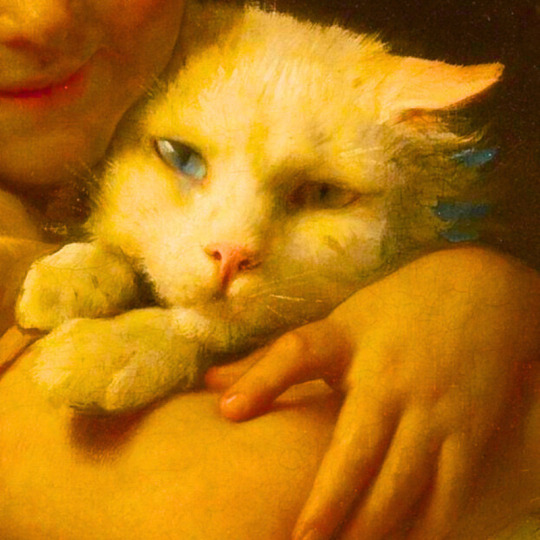
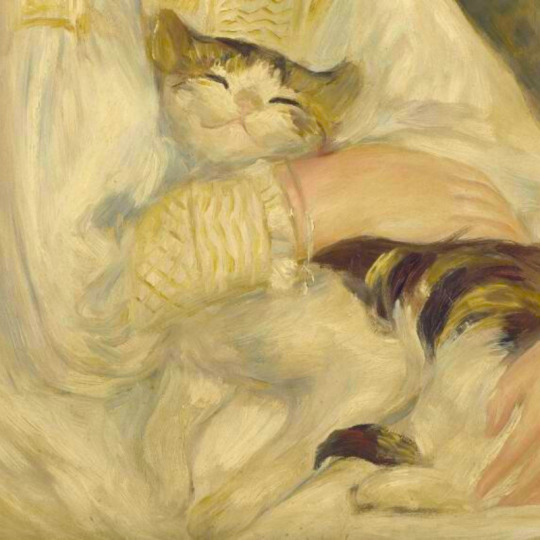
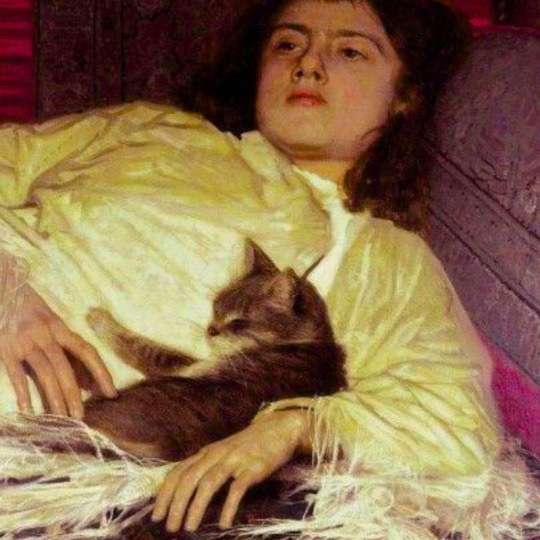

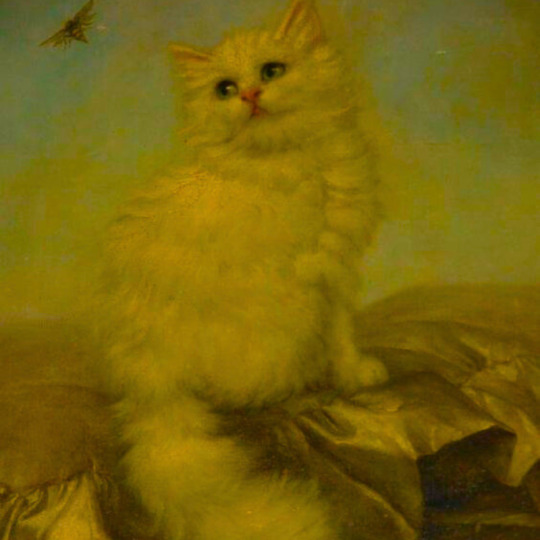
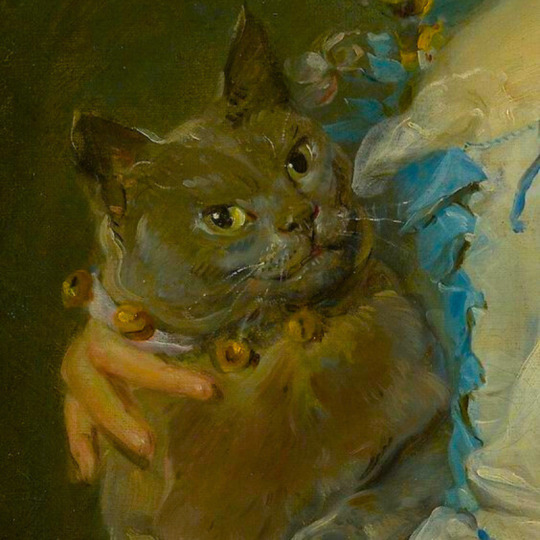
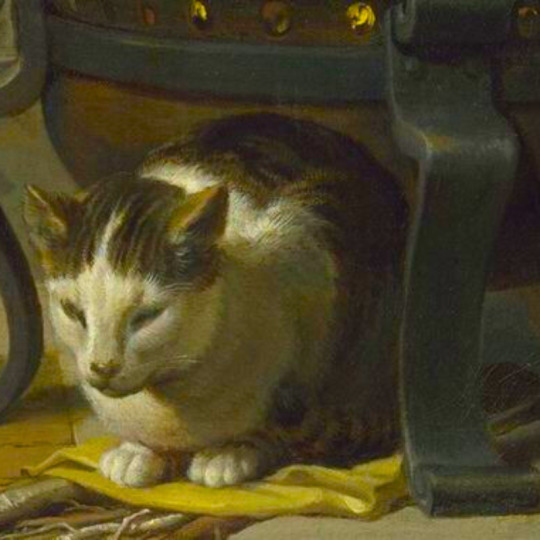

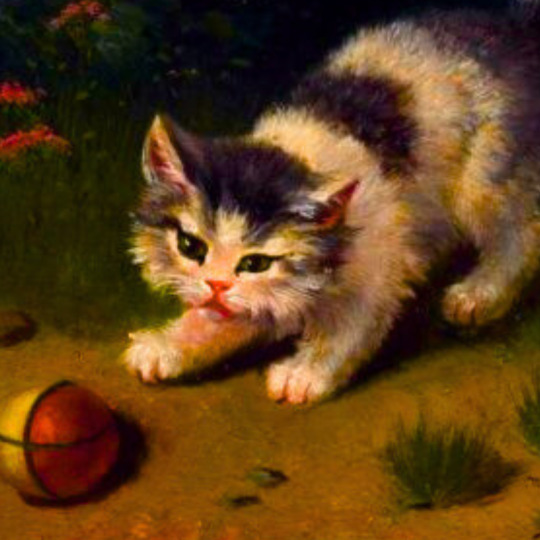
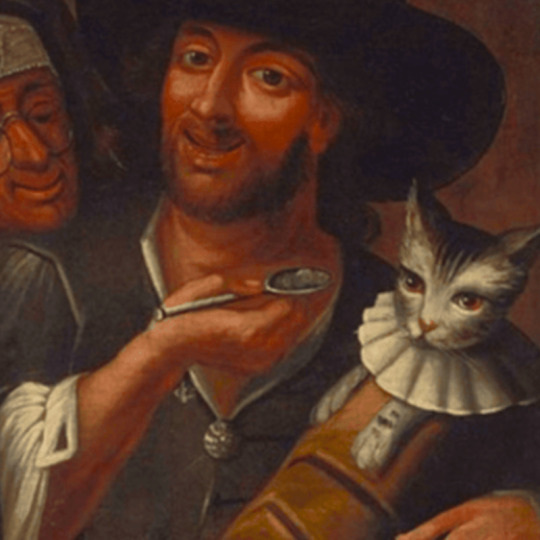
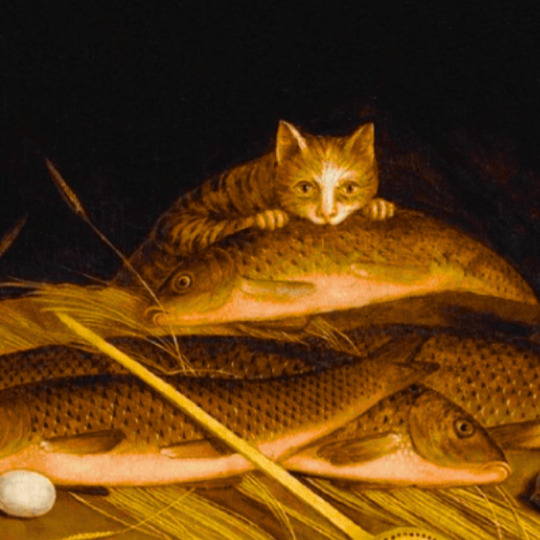

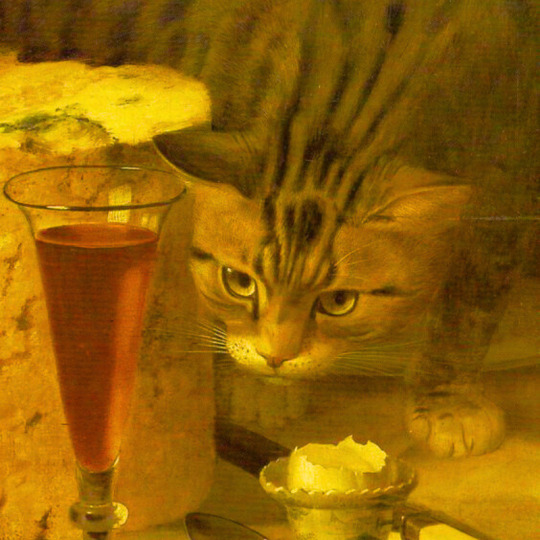

cats + art
#i cant find the artist or the name of this one#let chat angora by jean honore fragonard#no title but by clement burlison#can't find title but its by albert ranney chewett#for these i cant seem to find the titles but i do know the artists#but this one is by arthur rackham#cat churning butter 14th century germany#carl kahler is the artist but he did all cat paintings so i cant find the exact name#in a roman osteria by carl heinrich bloch#still life with a cat and a mackerel on a table top by giovanni rivalta#feline friends by agnes m cowieson#the butterfly and the cat by lily martin spencer#katzchen am fressnapf by julius adam the younger#the sewing box by henriette ronner#white cat watching a butterfly by arthur heyer#the milk dish by alfred brunel de neuville#the first lap by helen cridland#best friends by leon jean basile perrault#portrait of julie manet by pierre-auguste renoir#girl with cat by nikolaevich kramskoy#the nosegay by ford madox brown#my wife's lovers by carl kahler#magdeleine pinceloup de la grange nee de parseval by jean-baptiste perronneau#the sleep of the child jesus by charles le brun#jeune femme et petit garcon tenant un chat by john hoppner#cat and a toy ball by sophie wohl sperlich#a man feeding a cat by unknown#kitchen still life with fish and cat by sebastian stoskopff#two young women wrapped in yukata after a bath by kitagawa utamaro#the trespassers surprise by morley e
2K notes
·
View notes
Text
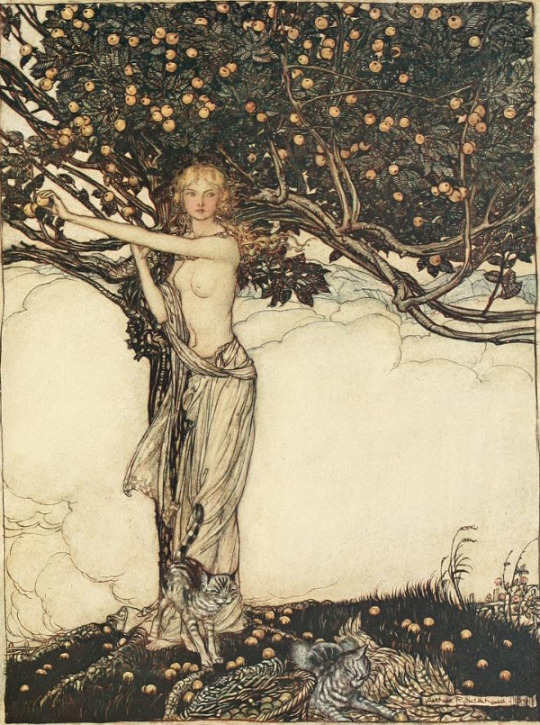
Freya, the Fair One
Illustration by Arthur Rackham
#Arthur Rackham#art#artist#illustrator#illustrations#Freia#mythology#Freya the Fair One#Illustration by Arthur Rackham
174 notes
·
View notes
Text
Myth!Loki's Hair Color: Common Depictions
Because the AI user that just annoyed me also claimed myth!Loki's canonical hair color is blonde and that's why they did that crappy blonde MCU!Loki AI art, and I am feeling spiteful cus fuck AI and that eyesore, and I need to wash that off my brain.
AND I KNOW this claim came from those people that interact with THAT ONE VERY obnoxious Sigyn stan that pretends to be a Norse mythology expert despite never providing proper citations or citing modern myth re-tellings and whines about children's story books not being accurate. Ask her to cite her claims and actually look at the sources, for the love of Loki!
LOKI HAS NO KNOWN HAIR COLOR IN THE MYTHS! THERE's NO SOURCE FOR THAT! Loki's also a shape-shifter! Loki can have their hair look like whatever the fuck they want. To my knowledge, the only gods that have confirmed hair colors are myth!Thor, who is said to a red-head, and myth!Sif being a blonde who gets a wig of magical gold to substitute her chorn hair. There's also a description of myth!Heimdall who is said to be the "whitest" god, implying blonde/white hair? Loki's only mentioned to be pretty, assumed to be Aesir -sized rather than gigantic, likely smaller than myth!Thor because myth!Thor can kick his ass and he can hold onto Thor's belt when crossing a river (Skáldskaparmál), and have scars on his lips due to them being sown shut.

Also from Gylfanning: "Loki is beautiful and comely to look upon, evil in spirit., very fickle in habit. He surpassed other men in that wisdom which is called 'sleight,' and had artifices for all occasions; he would ever bring the Æsir into great hardships, and then get them out with crafty counsel."
There's also the Snaptun stone, believed to be Loki due to the scarred lips, giving him a mustache.
The most common and widespread hair color depictions of Loki have red/ginger/orangey hair due to Loki mistakenly being thought to associated with fire because their name's too similar to the fire personification Jotun's name, Logi, because Richard Wagner fucked up in his Ring Cycle Operas and combined the two of them into "Loge". Arthur Rackham's illustrations based on Wagner's Ring Cycle are possibly the most influential in that regard because they're fucking awesome. Even GOW made their Loki depiction a red-head.
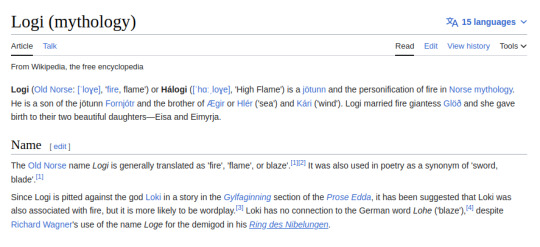
And here's a painting that looks like a ginger to me by James Doyle Penrose (1912):
The second most common hair color depiction is black hair, probably thanks to Marvel as it's most prevalent in modern depictions (e.g. Alan Cumming's Loki in "Son of the Mask", whom I fucking love).
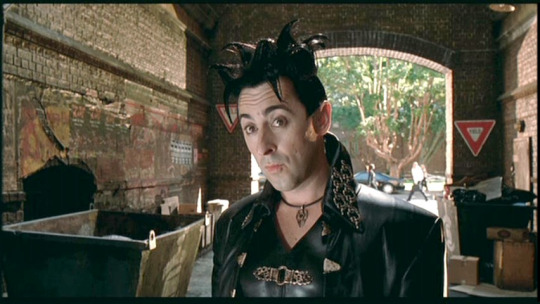
There's also the Valhalla comics that started in 1979 (after Marvel, but I don't think that contributed AT ALL because Vallhala comics are way more myth-accurate and fucking awesome. I am just including it here because it's a black-haired Loki depiction).
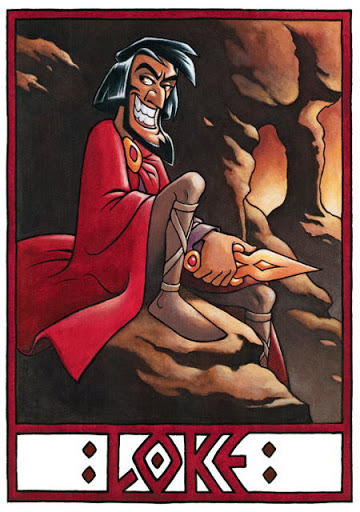
There's also Eric M. Esquivel's Ragnarok n' Roll (have not read and I am not inclined to do so, but it kept showing up in my loki searches 10+ years ago and its existence was archived in my brain due to that). Is it me or does he looks like Cantinflas because of the mustache?

This is Cantinflas btw

There's also Jul I Valhall Loke (Thanks Scandinavian Twitter users for showing me this gem even if I can't understand the language. I am forever grateful.)
youtube
And surprisingly, Marvel was not the first to give him black hair. Marten Eskil Winge portrayed Loki with black hair in his 1863 painting "Loki and Sigyn."
Neil Gaiman has depicted Loki with a variety of hair colors, USUALLY as a literally "fiery" red-head (Sandman comics & American Gods book), whatever Johnathan Tucker's hair color is in the American Gods TV show, and black-haired (Norse Mythology graphic novel).



There's a brown-haired Loki depiction in Assassin's Creed (I have not played it btw).

And sometimes he's just some demonic thing with horns:

#i have a weird belief myth!loki's hair is brown because no one comments on it#myth!loki#norse mythology#valhalla comics#the life and times of juniper lee#neil gaiman#american gods#arthur rackham#richard wagner#son of the mask#alan cummings#marten eskil winge#sandman#assasin's creed#marvel comics#mcu#jul i valhal#james doyle penrose#peter madsen#eric m. esquivel#idw comics#atreus#god of war#LokiInMedia#IStartShit#hot takes#Youtube
12 notes
·
View notes
Text

arthur rackham's drawing of baucis and philemon as trees from hawthorne's a wonder book may be one of my favorite drawings ever. like...the people looking up at them in wonder. the way that even as trees they have those perfectly human wrinkles. the gentleness of their smiles and the way philemon has his branchy hand around baucis. i think this is what love looks like
#tagamemnon#greek mythology#theyre so. theyre so......#it's one of my favorite stories ever#queueusque tandem abutere catilina patientia nostra
738 notes
·
View notes
Text
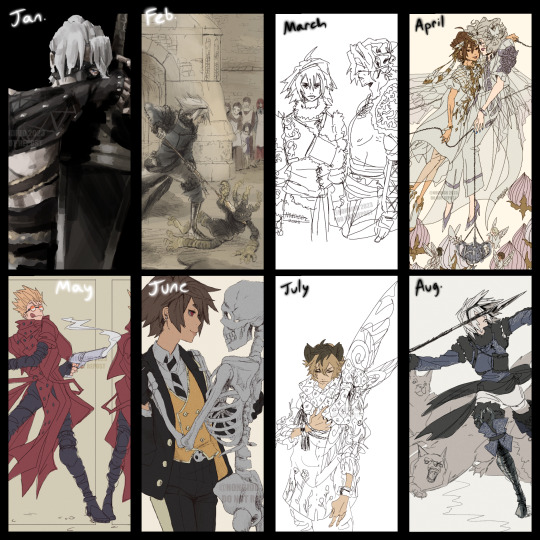
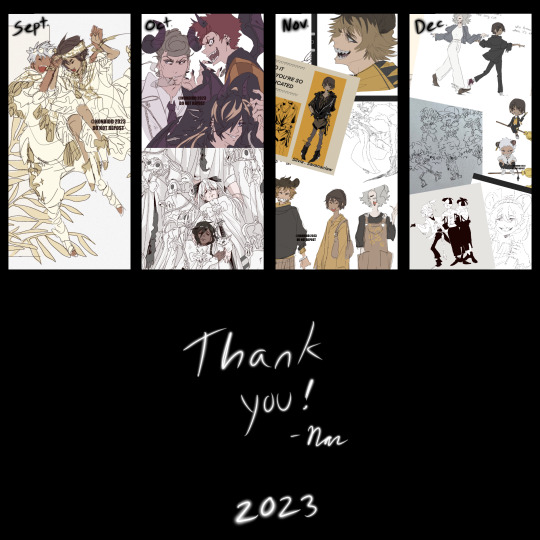
2023 Art Summary 🥳
January remains my most emotional piece. I was processing grief during the one year anniversary of losing a close family member. And it’s apparently the only painting I did this year LOL
After that is where I went back to studying fairytale art. February being a NieR recreation of Arthur Rackham’s The Romance Of King Arthur artwork
Then as for march, that’s where I started to study Henry Clarke and essentially lost my mind for the rest of the year with linework ✌️😩
I had two favs from October so they both go in 🫶
And as for November and December I’ve hit my burnout + busy with health and holidays LOL. Not forcing an illustration just to have one so there’s all my silly little doodles ✌️

Honorable mention is the savanaclaw set I did this year! Wasn’t something I planned on but I had fun making it and it think it’s my most popular set this year. I was surprised so many people liked it 😆
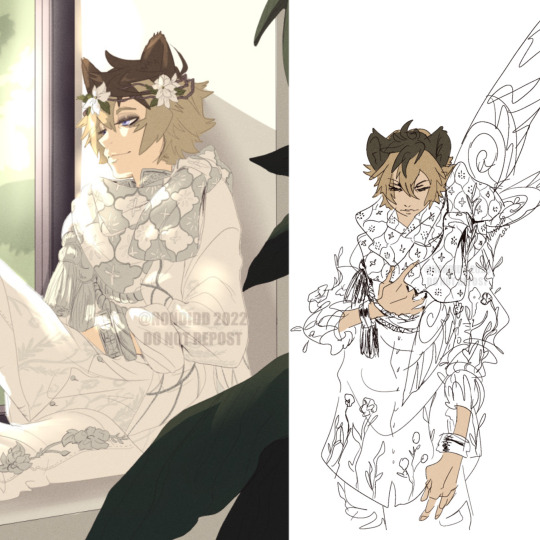
The next photo is a comparison of how I drew FG Ruggie last year compared to this year. I wanted to show the comparison to explain my shift in focus in my illustrations. After studying Clarke’s work I realized I was having fun creating again. Not to say I’m not satisfied with how the older Ruggie piece came out but I found myself often frustrated with it trying to make sure everything was “drawn right” for lack of a better explanation. It was a chore. I’ve come to find I enjoy making illustrations now with the mindset of “how do I want to convey this” rather than “how accurate can I make these details”. Drawing the newer Ruggie was enjoyable the entire time. My focus wasn’t accurate details or semi realistic but rather what emotion could I convey with just these lines and limited color. And that’s how I’ve been moving forward with my art as of late. It’s been fun again
Because of my newfound confidence and enjoyment of creating again I’ve gone back to traditional sketching too. It used to feel so constricted for me but now with loose lines and a loose mindset I’ve been scribbling all over notebooks again 😆
All this ramble to say I’m satisfied with what I’ve done this year. My health needs to start taking priority come 2024 but I hope to still create and share in the new year ✌️ If you took the time to read all this, thank you 🙏
45 notes
·
View notes
Text
The Fairy Queen of Scottish Folklore

Perhaps thanks to the terms seelie court and unseelie court, or maybe because of fiction, there is now modern folklore that there are two opposing fairy kingdoms. One is good, and the other is bad. However, the Seelie/Unseelie Court terms were historically just ways to categorize typically good fairies and typically bad fairies.
There is only one queen and king of the fairies mentioned in Scottish folklore.
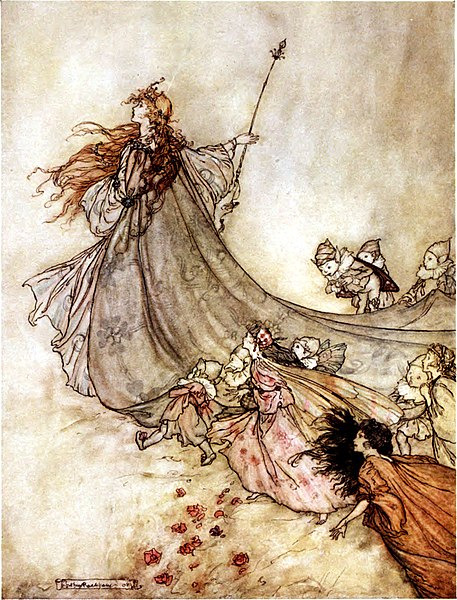
"The Fairy Queen" by Arthur Rackham(1914)
The queen rarely has a name(though is sometimes called Nicneven), and is more often simply called The Fairy Queen, or The Queen of Elphame, which is within the Otherworld. She is described as being clothed in green, as having otherworldly beauty, and having great power.
Within church lore, she must send a human soul to hell every 7 years, otherwise hell will take a fairy soul. This is also related to the changeling folklore, where those souls are sometimes swapped out with something (or someone) enchanted to look like the missing.
However, there are even more stories that contrast this dark side by painting her in a kinder light. In those, the queen will remove curses off people and give gifts. Even The Silver Chanter is sometimes said to be given by the fairy queen to Ian Maccrimmon, after she was impressed with his musical talent (and good looks). In his hands only, it would play the sweetest music.
There is sometimes a fairy king also mentioned in folklore, but the queen seems to hold the most power.
“There was also a king of elf land. From the accounts extracted from or volunteered by witches, etc., preserved to us in judiciary and Presbyterian records he appears to have been a peaceable, luxurious, indolent personage who entrusted the whole business, including the recruiting department, to his wife.”
“Folk Lore in Lowland Scotland” by Evelyn Blantyre Simpson (1908)
Not only does the king take a background roll, but there are more stories of her taking human lovers than there are with even mention of the king. The most famous of these human lovers might be “Thomas the Rhymer.” He was said to be an amazing singer, but what instrument accompanied him can change depending on the tales; some times he is a famous lute player, other times a harp, and sometimes another instrument.
It was a dreadfully hot day when Thomas had set out walking, so he decided to take shade under a tree — called the Eildon(or Eldyn) tree — to catch his breath. There, on the slope of the east-most of the three Eildon hills, he found the spot so pleasant that he decided to stay and play a song on his instrument.
As he played, he began to hear a twinkle of bells on the wind. The source of the bells turned out to be a gorgeous woman who rode out of the woods on a white horse.
“Her skirt was o ‘ the grass green silk ,
Her mantle o ‘ the velvet fine ;
At ilka tett of her horse’s mane hung fifty silver bells and nine.”
"Folk Lore in Lowland Scotland" by Eve Blantyre Simpson(1908)
After much talking between the two, the woman admitted to being the fairy queen, and asked if he would go with her to the fairy realm. Awestruck by her beauty, he readily agreed. There, he enjoyed himself so thoroughly, he had no idea how much time was passing.
"They came at last to the fairy kingdom where revelry and dancing were the order of the day . Thomas passed so delectable a time that when the queen asked him how long he thought he had been there , he calculated some seven days had been passed chasing the golden hours with flying feet . He could scarce believe the beautiful sovereign when she assured him he had been gone from earth five years and two."
"Folk Lore in Lowland Scotland" by Eve Blantyre Simpson(1908)
This marks another crossroads in how the tale (and the perception of the fairy queen) differs. As per the church lore, Thomas was supposed to be one of the souls given to hell, but the queen had grown a soft-spot for Thomas and advised him to run.
In other stories, he simply returned to the human realm and remained there for some time.
In both versions, before they parted, she charmed him to have a tongue that could not lie, as well as a gift of prophecy. He had thought the truthfulness would be a hindrance, but back in the human realm, his honesty earned him the name “True Thomas.”
There are many prophecies said to originate from Thomas, some of which people claim came true. If you are interested in a list, there is a lengthy one in the book “Popular Rhymes, Fireside Stories, and Amusement of Scotland” by Robert Chambers(1842).
After many years, he abruptly stated “I have been here long enough,” and simply left our world, never to be seen again. Some say the queen reclaimed him and he is now forever trapped in the Otherworld, while others say it was his own choice to return to the woman he loved.

Note: If you want to research further, I have more quotes and sources on my website.
#fairy#folklore#fairies#mythology#scottishfolklore#scottish folklore#scottish mythology#fae#scottish#faeries#scottish fae#the fairy queen#scottish fairies#myths#scotland#faery#ScottishFolkoreBasics#MiscScottishFairies
112 notes
·
View notes
Text
Mermaids and Mr Freud...
What do you think when you hear the word “mermaid”? Chances are, you’ll imagine a beautiful girl with a sparkling fish tail, naked breasts, flowing hair, gazing into a mirror: a scene straight out of early 20th-century Golden Age illustrators Arthur Rackham and Edmund Dulac. Or perhaps you see Ariel, Disney’s 1989 cartoon version of Hans Christian Andersen’s The Little Mermaid, with her cherry-red hair and purple shell bikini. That romanticized – and Disneyfied – picture of a mermaid seems fated to endure with this year’s live-action The Little Mermaid film (though the casting of Halle Bailey in the title role has prompted as much racist backlash as it has celebration. The mermaid of Andersen’s 1837 fairytale was white, say the purists.)
But Andersen himself drew on a far older, stranger, and more subversive folklore to write his story. His tale of a mermaid who, falling in love with a human prince, is forced to sacrifice her tail and her voice in order to become human, was deeply influenced by Undine, the 1811 novella by Friedrich de la Motte Fouqué, which in turn was inspired by the 16th-century occultist Paracelsus, who coined the word “undine” to describe an elemental water spirit who can only gain a soul by marrying a human. And mermaid legends, like so many other fairytales, have been shared in many parts of the world for millennia.
One of the earliest mermaid stories dates back to sometime around 1000 BC. In Assyrian mythology, the goddess Atargatis, who was venerated for thousands of years all over the Middle East, attains a half-fish, half-human form after throwing herself into a lake. The Yoruba spirit, Yemoja, who is represented as a mermaid, appears under other names as an ocean and river mother goddess – Yemaja, Yemanjá, Yemoyá, Yemayá – across half the world. Mami Wata – a water deity sometimes known as La Sirène - revered in Haiti and many parts of Africa, often appears as a mermaid, with a mirror that allows the passage from one plane of reality to another. And so it goes, from the ningyo of Japanese folklore to the sjókonar of Norse sagas. It is one of the most powerful archetypes in our shared dreaming.
Nor were mermaids always understood to be mythological. Throughout the Middle Ages and beyond, European bestiaries and illuminated manuscripts portrayed mermaids as real creatures. On several occasions fishermen have claimed to have caught them in their nets. Early explorers reported mermaid sightings – although it is more likely that they were dolphins, seals or manatees, mistaken for mermaids by sailors expecting to encounter exotic beasts on their journey. Since then, humans have stubbornly continued to look for proof that mermaids are real (so far, without success).
What does the mermaid mean? Why is the half-fish half-woman such a potent, enduring legend? At the heart of these stories is the question of women’s power. Fairy tales and folklore have played an important role in challenging societal roles and giving people opportunities to discuss difficult or taboo subjects through the safety of metaphor – in this case, through the image of a woman whose irresistible sexual power over men is balanced by her own inability to function sexually or to reproduce. And in the days when pregnancy and childbirth often proved fatal, that might not have been such a bad thing. The mermaid cannot be raped, or forced to give birth. Not being human, she is not bound by the conventions of human society or the laws of the Church. She enjoys both the freedom and the sensuality of her element without any of the attendant dangers or discomforts.
In folklore, the mermaid has independence, and can exercise sexual power over men, which makes her ultimately dangerous, unnatural: a monster. Perhaps this is why so many ancient myths and medieval bestiaries depict mermaids as untrustworthy, deceitful creatures, leading sailors to their doom. Their bodies are all sexual promise, but no sexual reward; and their voices are so enchanting as to drive men to madness. Unable to fulfil what some believe to be a woman’s biological destiny, they are often portrayed as soulless. Because a woman who uses without being used, who seduces without being seduced, who moves through water and air – whereas men are doomed to drown if they venture into the mermaid’s world – is a challenge to God, to the patriarchy, and to order itself.
In The Little Mermaid, Andersen tamed this older, more radical tradition. The moralism of his tale serves the dual purpose of mastering the mermaid – of making her fall victim to a human’s charms, rather than the more traditional way around – and taking away her power. The mermaid, made helpless by love of her prince, gives up her native element and the autonomy that comes with it, and exchanges it – via a witch’s spell – for a pair of feet, though walking causes her terrible pain. She also relinquishes the power of speech, which means that she is incapable of expressing her love in any way but the physical. And if her prince falls in love with someone else, then the mermaid is doomed to die on the instant, and to forfeit the soul for which she has sacrificed everything. Her entire being – her very existence – becomes dependent on the love and approval of her prince. Her independence, her challenge to the patriarchal status quo is gone. Though the ending of Andersen’s tale is – to a certain degree – redemptive (the mermaid, refusing to take the life of her prince in order to save her own life, is borne aloft by spirits of air and promised an eternal soul), it seems very cruel, especially as the heroine is only fifteen years old. A contemporary reader might well see in Andersen’s telling a warning to an emerging women’s movement – women’s power has often been seen as fragile, unnatural, and at the mercy of emotion.
Unlike the tragedy of Andersen’s mermaid and prince (and of Fouqué’s Undine), the 1989 Disney film rewards Ariel and Eric with a happily-ever-after ending. And it tells their story in a cheery, colourful palette (a stark contrast to Kay Nielsen’s original dark, eerie concept drawings for the film), which while being pleasingly child-friendly, also reduces the mermaid’s essential alienness, and minimizes her sacrifice, thereby making her tale into little more than a love story with a little added jeopardy.
But Disney also perpetuated other tropes. It is meaningful that the sea witch who provides the mermaid with the spell fits the older-woman archetype well represented in fairy tales: embittered by age, envious of the little mermaid’s youth and beauty. She is the one who demands the mermaid’s voice as payment for her services: a potent image of an older generation, silencing the voices of youth. (In Andersen’s telling, she too is the one who demands that the mermaid’s sisters cut off their hair in order to save their sibling.) The older woman is filled with rage and contempt for the younger woman; taking pleasure in their humiliation and the loss of their power. And as the tentacled Ursula in the Disney version, she is especially monstrous.
Over the centuries, fairy stories have always been reinvented to serve the needs of the changing times. And people have often fretted about this. (In 1853, Charles Dickens criticised the trend for rewriting fairytales to fit didactic, contemporary concerns.) But perhaps that the meaning of the mermaid has drifted further and further away from its origins in ancient folklore should not be cause for too much concern. Today, the mermaid has become the symbol of the trans community, whose members often feel the generational divide especially keenly. And there are endlessly imaginative ways to retell the tradition. (In 2008’s Ponyo, Hayao Miyazaki spins his tale of a goldfish who longs to be human into a charming meditation on childhood.)
Like the ever-evolving traditions of fairytales, magic, too, is transformative. In stories, magic acts as a metaphor for the change we seek to effect in our lives, in ourselves, in the world around us. Perhaps that is why fairy tales resonate so deeply with us. Why else would we cling to them, retell them in so many ways? They teach us not that magic exists, but that change is possible. They teach us not that dragons exist, but that monsters can be overcome. And they teach us to hope, in the face of a world that seems to be getting harsher and more confusing by the day, that sometimes love can save us, and that, even in the face of the cruellest kind of tyranny, we can still keep control of our fate, and hope for a happy ending –not just a Disney wedding, but something perhaps more satisfying. In films like Moana - or more recently Ruby Gillman, Teenage Kraken – the love story is with the sea; a story of claiming, rather than giving up power. Mermaids – in all their aspects – are still working their magic on us. And now, perhaps more than ever, it’s time to listen to their song.
79 notes
·
View notes
Note

Germanic dragon. How we feeling about those.
Germanic dragons (also called worms) are a type of European dragon originating from Germanic mythology, including Norse, Anglo-Saxon, and Continental Germany.
They are typically depicted as large venomous serpents, such as Wyrms and Lindworms, though later myths feature more similarities to typical western dragons.
Examples of Germanic dragons include but are not limited to:
Níðhöggr, the serpent from Norse Mythology that gnaws at the roots of Ygdrassil
Jörmungandr, the Midguard serpent and child of Loki
The dragon from Beowulf
Fáfnir, a dragon from Germanic legend, depicted in Norse mythology having been turned into a dragon by Andvari's cursed ring
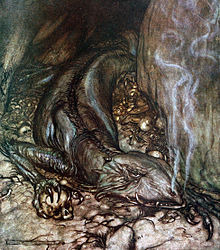
(ID: The dragon illustrated by Arthur Rackham)
Germanic serpents breathing poison predates the ideas of them breathing fire, the dragon in Beowulf being one of the earliest examples of a fire breathing dragon.
They are often depicted on old runestones and churches.

(ID: A Lindworm depicted on the U 871 runestore in Uppland, Sweden)
9/10
50 notes
·
View notes
Text

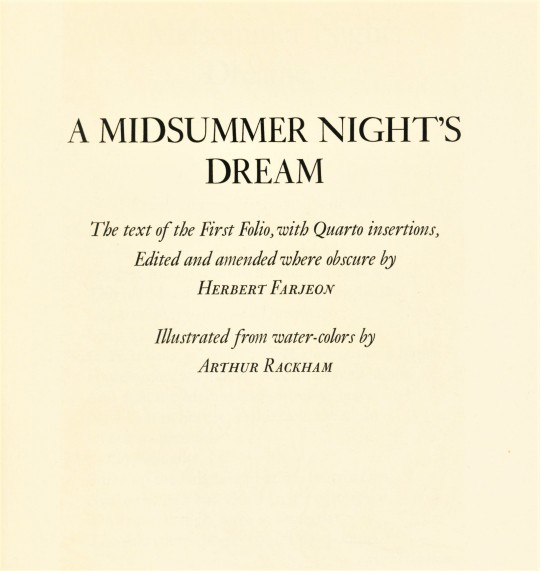



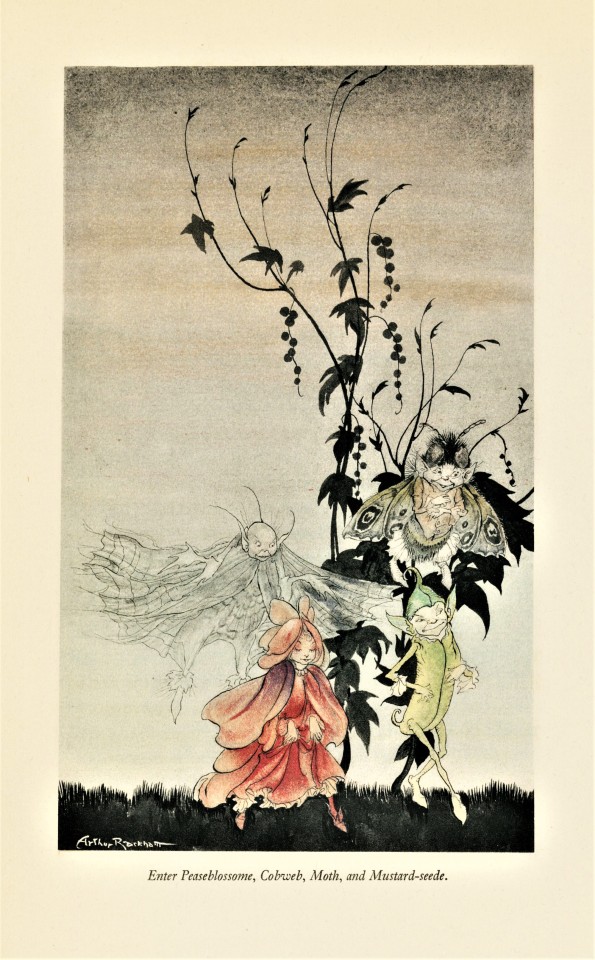


Shakespeare Weekend!
This weekend we are sharing Shakespeare’s comedy, A Midsummer Night's Dream, the twenty-fifth volume of the thirty-seven volume The Comedies Histories & Tragedies of William Shakespeare, published by the Limited Editions Club (LEC) from 1939-1940. This play was likely written between 1595 and 1596, and while it may have been performed before 1600, the first performance known with certainty occurred at Hampton Court on 1 January 1604. The play was entered into the Register of the Stationers' Company on 8 October 1600 by the bookseller Thomas Fisher, who published the first quarto edition later that year. A second quarto was printed in 1619 by William Jaggard, as part of his so-called False Folio. The play next appeared in print in the First Folio of 1623.
This volume was illustrated by the prolific English artist Arthur Rackham (1867-1939). Rackham favored taking on work that would allow him to make “fantastic and grotesque illustrations” which we see in his emotive watercolors for A Midsummer Night’s Dream. Rackham began his career illustrating periodicals but after creating noteworthy illustrations for Rip Van Winkle in 1905, he went on to illustrate nearly one hundred books in his fanciful ink and watercolor style.
The Limited Editions Club took particular care in reproducing Rackham’s work for this volume. Through a process that included delicately adding color over lithographic prints, LEC was able to preserve the spirit and vibrance of Rackham’s work.
The volume was printed in an edition of 1950 copies at the Press of A. Colish. Each of the LEC volumes of Shakespeare’s works are illustrated by a different artist, but the unifying factor is that all volumes were designed by famed book and type designer Bruce Rogers and edited by the British theatre professional and Shakespeare specialist Herbert Farjeon. Our copy is number 1113, the number for long-standing LEC member Austin Fredric Lutter of Waukesha, Wisconsin.
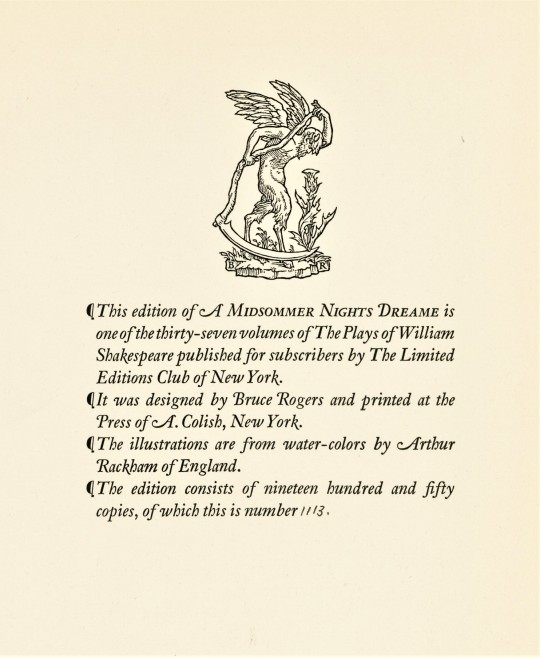
View more Limited Edition Club posts.
View more Shakespeare Weekend posts.
-Jenna, Special Collections Graduate Intern
#Shakespeare weekend#William Shakespeare#Limited Editions Club#LEC#Arthur Rackham#Watercolor illustration#A Midsummer Night's Dream#Press of A. Colish#Bruce Rogers#Herbert Farjeon#lithographs
72 notes
·
View notes
Text

October 11th, 1974 - Queen Story!
'Killer Queen' / 'Flick Of The Wrist' released in the UK
(double A-side single)
"‘Killer Queen’ I wrote in one night.
I’m not being conceited or anything, but it just fell into place. Certain songs do. Now, ‘March Of The Black Queen’, that took ages. I had to give it everything, to be self indulgent or whatever. But with ‘Killer Queen’, I scribbled down the words in the dark one Saturday night and the next morning I got them all together and I worked all day Sunday and that was it. I’d got it. It gelled. It was great. Certain things Just come together, but other things you have to work for. The whole band is very particular. We don’t go in for half measures and I’m very hard with myself. There’re no compromises. If I thought a song wasn’t quite right, I’d discard it. I’m very intricate and delicate. You can see that in my paintings. I love painters like Richard Dadd, Mucha and Dali, and I love Arthur Rackham.”
- Freddie Mercury
Extract from interview Melody Maker
12-21-1974, Freddie Mercury: Queen Bee
by Caroline Coon
👉 Side A by Freddie Mercury
B - Side by Freddie Mercury and Brian May
First song Brian May collaborated on after recovering from hepatitis (spring 1974)
👉 From their third album "Sheer Heart Attack", "Killer Queen" was the band's breakthrough hit, reaching #2 in the UK and #11 in the United States
👉 May 1975 - Freddie Mercury won an Ivor Novello award for his ‘Killer Queen’
Pic: November 1974 - Queen Story!
📷 Queen perform 'Killer Queen' on the set of the Dutch TV show TopPop
👉 Taken from 'Sheer Heart Attack' album released in 1974; Written by Freddie Mercury
#freddie mercury#queen band#london#zanzibar#legend#queen#brian may#john deacon#freddiebulsara#roger taylor#killer queen#1974#sheerheartattackalbum#Spotify
35 notes
·
View notes
Text
Children's Book Illustrations that Stayed with Me as a Little Girl (Part 1)
The Piper at the Gates of Dawn illustration for The Wind in the Willows by Mary Jane Begin

Mermaid's Lagoon from Peter Pan by Scott Gustafson
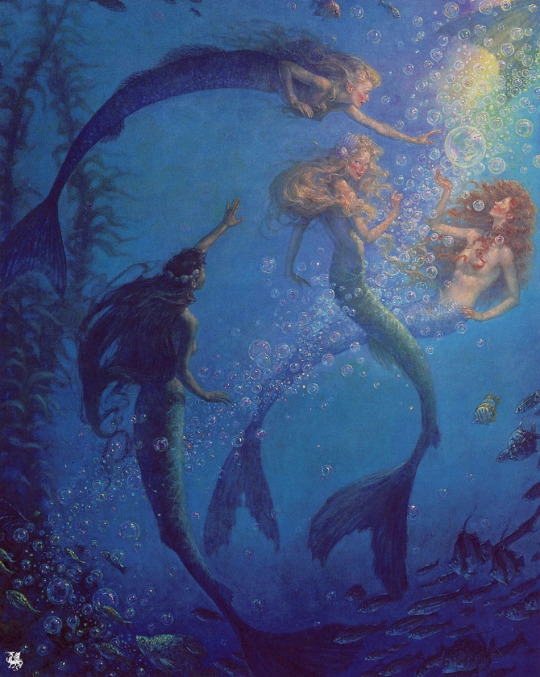
Jean Zallinger's Hook from a Bullseye Step into classics version of Peter Pan. He's certainly not as dashing as Jason Isaacs, and I loved his teeth which I imagined all yellowed and reminded me of a skull. I also imagined his eye gleaming red.

Michael Hague's take on Smaug
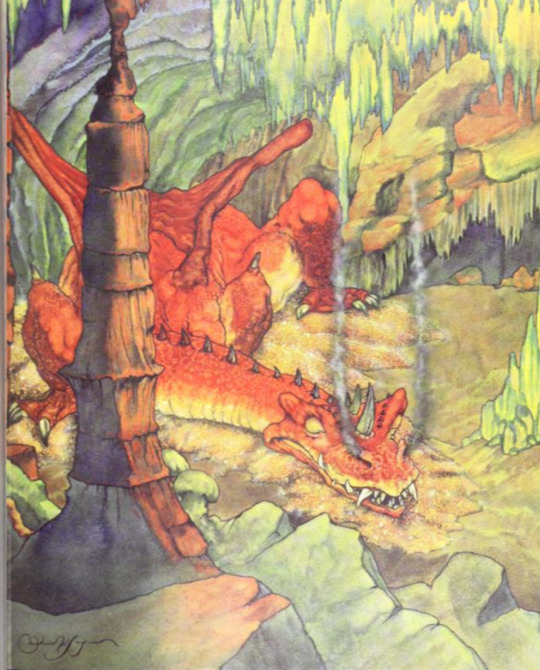
Freya's Hall illustration from D'aulaire's Book of Norse Myths. This illustration soothed me and I wanted to be in their company.

And more D'aulaire art, from their Book of Greek Myths, Gaea and Uranus. I LOVE Gaea in particular - the way the river flows through her neck, the way his stars are reflected in the pools of her eyes...

...the birth of Aphrodite... I LOVE the colors here, the oranges and golds that mingle with the blue-green of the sea.
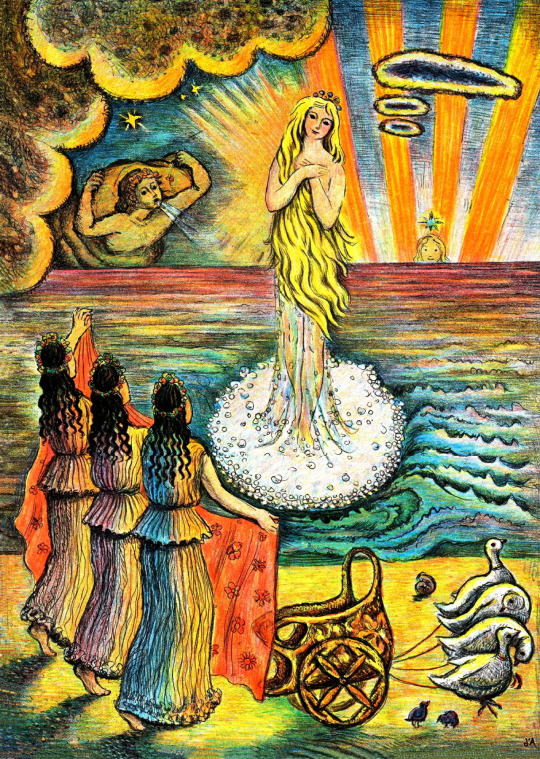
...and Perseus and Medusa. I loved Medusa's design in this book because it felt so unique, not usual depiction I was familiar with and also not Harryhausen's take.
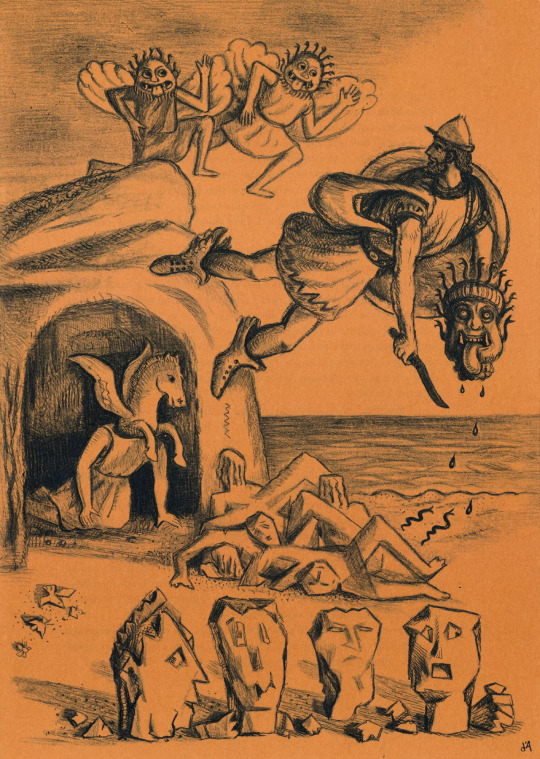
Arthur Rackham's illustration of the third sister's encounter with the human children. This one definitely encouraged my naturist tendencies when I was little lol.

the Asian Lung from Dragonology

Dora Curtis and Diana Stanley's illustrations for a 1964 edition of Jean Ingelow's Mospa the Fairy that I found in my elementary school library - ALL of them - the header for the first chapter always connected with me because it promised wonder just on the edges of our own world, even though it wasn't one of the fabulous color plates...

...an example of which I share here.
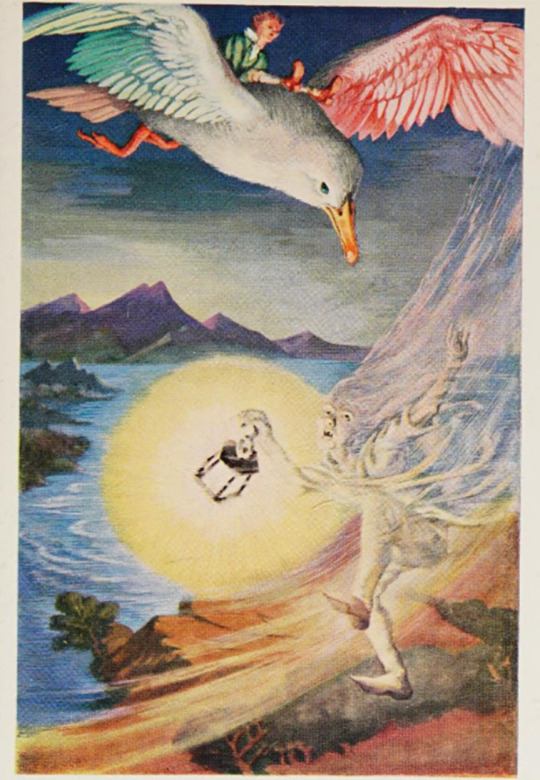
(I think I'll continue in Part 2 because this post is getting rather long.)
@ariel-seagull-wings @themousefromfantasyland @thealmightyemprex @princesssarisa @amalthea9 @grctw @brokenwild
#the wind in the willows#peter pan#the hobbit#mopsa the fairy#d'aulaire's book of greek myths#the little mermaid
16 notes
·
View notes
Text
The Boiling-Away of Young Cú Chulainn's Wrath
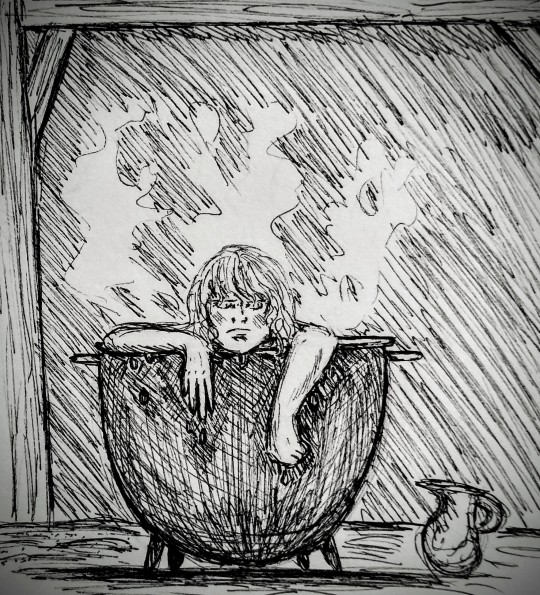
"He was placed in three vats of cold water to extinguish his wrath; and the first vat into which he was put burst its staves and its hoops like the cracking of nuts around him. The next vat into which he went boiled with bubbles as big as fists therefrom. The third vat into which he went, some men might endure it and others might not. Then the boy's wrath went down" (Dunn verses 77-79).
An old sketch of the young Cú Chulainn sitting miserably in the boiling vat which drowned his wrath.
One day I would like to produce a high-quality illustrated edition of the Táin Bó Cúailgne after the fashion of an Arthur Rackham gift-book. Rather an ambitious project.
#cu chulainn#cuchulainn#cu chulain#Irish mythology#tain bo cuailgne#the tain#red branch cycle#ulster cycle#setanta#changeling
37 notes
·
View notes
Text

(Illustration by Arthur Rackham, 1925, Sweetheart Roland)
Wolfer by Peppershark is one of the most unique magical AU’s of any fanfic I have ever read. Peppershark has a way with words that will fully immerse you into the world she creates and leave you pining for more.
Old West AU with magic.
Synopsis:
In the year 1889, Tom Riddle has travelled west to a little gold-rush town in the foothills of California’s High Sierras. What happens next shouldn’t have been so easy.
He never meant to find a woman this early in his plan, but lucky for Tom this little fury is just a firecracker of accidental magic.
It gives him a fine feeling seeing the preacher’s daughter going about the town, doing the Lord’s work, and not even knowing she belongs to him.
Of course, Hermione Granger doesn’t even know she’s a witch.
#tomione#peppershark#wolfer#wolf hunter#old west wizardry#tomione fanfiction#do yourself a favor#and read this
18 notes
·
View notes
Text
Madame Putiphar Groupread. Book Two, Chapter XXXVII
𝔙𝔦𝔯𝔞𝔤𝔬!

Brünnhilde slowly and silently leads her horse down the path to the cave, by unparalleled master Arthur Rackham, (check the entire Ring Cycle illustrations here, printer's ornaments, covers, the WORKS)(aaaa)
{ @sainteverge @counterwiddershins }
we learn through a letter (said this before but multi genre novel, here riffing on the epistolary genre, huge in the 1700's) about Putiphar's plans for Deborah, her revenge is to corrupt her, make her the perfect lover for the King, and also since she prides herself in “chastity” so much -or so Putiphar thinks, we know Deborah enjoys sex with her husband, she just didn't like the idea of being forced to fuck Villepastour/the Madame, which makes her a prude in her eyes- the madame must make her a slave to sex via her “education” she lists all of the things the madame has already tried, pornography, erotic engravings and art. Etc etc as suggestions to achieve sex addict status for Deborah. The madame writes back in despair. Deborah is “an alarmed and recalcitrant virgin”-the madame is talking about a pregnant woman here which is kinda funny? and revealing of their mindset, one can be a virgin while pregnant without being the mother of Christ, virgin here is used pejoratively as prude-
Her words also reveal a connection between virginity and rebeliousness: Brunhilde would loose all of her warring power after having sex with a man, Jean d'Arc's virginity was a whole deal.... there's also the Taming of the Shrew... (and the toxic narrator in Cousin Bette. Virginity is considered by this oppresive mindset-after some time- bad for women, they have to be broken down or else they get too unsubmissive,,, which imposes a narrative of rape and brutality to virginity loss... -let us once again think of Boticelli's Nastagio degli Onesti a wedding gift to a bride by her husband- the ideas about hetero sex here are sickening, rape is then, always a must, and after it a woman can finally acquire a peaceful and docile character and she will come to enjoy sex after this painful first time, it's a matter of the woman overcoming the pain/getting used to it rather than the man being careful -> i am talking of these mainstream sexist ideas, i am NOT implying all men were historically brutal rapists hurting their partners all over the place, only that in a way the dominant narrative habilitated the idea that pain was bound to happen anyways and that it was the women's responsibility to overcome it and she HAD to overcome it)(a recent example of this idea can be seen in a monologue by the ever toxic misogynist Berlín in La casa de papel... just showing how this idea lives on in fiction) conformingly, The Madame links this virginial rebeliousness with horse riding metaphors, Deborah has to be tamed, subdued, mounted, etc.
the madame's letter then describes Debby's siege and her face off with Cervière, and how she won that round, Putiphar replies with a change of strategy -> starving her into submission, and then showering her with kindness/ a patronizing sweetness/complacency)
She calls Debby a virago (not the first time this happens, masculinizing her strength and resilience) who cannot be openly contradicted, she has to be fooled and bribed and manipulated while keeping a façade of kindness (this book is a poem on consent + coercion)
#madame putiphar#text post#not really a long post this time ;)#now that i can write in gothic and even color it red i am UNSTOPPABLE
9 notes
·
View notes
Text
I will complete my trilogy of Hansel and Gretel stage adaptations of fascinating visuals with this piece. I made several posts about the Royal New Zealand Ballet's adaptation and its homages to Germanic cinema (and obscure carnival traditions). I reblogged something about the Hänsel and Gretel concert of Lindemann-Tägtren and its disturbing, horrifying but also darkly clownesque visuals... And now I bring you the San Diego Opera adaptation of the famed Hansel and Gretel opera, with quite impressive puppetry!
I will copy-paste here the content of an article by Beth Accomando, which can be read in its original form here.

It’s not every day that an opera singer gets to bring a cannibalistic witch to life.
"I lure children into the forest and I cook them into gingerbread cakes and then I eat them. It's delightful," said tenor Joel Sorensen.
But what’s not so delightful is having to wear a big puppetry rig to create a larger-than-life witch onstage.
"I am a puppet," Sorensen explained. "The witch is a puppet, a very large puppet. And I have a colleague, Iain [Gunn], behind me. He bears the bulk of the weight on his back. So I'm basically working with a puppet while trying to sing and convey a character. It's a real challenge."
The challenge for director Brenna Corner in bringing Engelbert Humperdinck's "Hansel and Gretel" to the San Diego Opera stage was how do you bring a fairy tale to life?
"One of the things that I think is really tricky about 'Hansel and Gretel' is size. How do you make two grown-ups look like they're kids and two other grown-ups look like they're adults? And then someone else looks sort of even bigger and more powerful. And quite frankly, the best way I could figure out how to do that was puppets," Corner said.
So anything that was not human became a puppet. Like the witch.
"It's different in that it's not my physicality. So, because I'm manipulating her hands, her arms, and I'm working in tandem with [Gunn] so I can't move as quickly as I might normally or as sharply but facially and vocally, I'm trying to do the same things that I would do if I were performing it without a puppet," Sorensen said.

Now if you are thinking of puppets as something you put on your hand, think again. Imagine actors completely enveloped in layers of fabric with a large sculpted head or face high above their shoulders and an arm span that exceeds 10 feet.
"We had to really kind of blow up the notion of what a puppet is in order to successfully encompass the fusion of opera and puppetry," said Judd Palmer of Old Trout Puppet Workshop in Calgary. "Our inspiration was classic 19th century children's book illustrators like Arthur Rackham or N.C. Wyeth. We wanted the whole thing to feel like it comes out of a book and it becomes the illustrations coming to life like a pop up book."
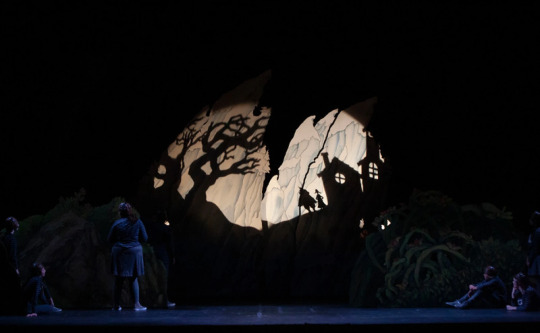
Palmer designed the puppets for a production in Canada and Iain Gunn of Animal Cracker Conspiracy here in San Diego is now the puppeteer working with Sorensen to play the Witch onstage.
"I get to live inside this character that I'm helping to bring alive," Gunn said. "But she has her own voice standing right in front of me. I don't know how to describe it, but I feel like I am transported inside this imagination. It's like I'm in the 'Time Bandits' or something like that where … we're doing something magical and it's a magical character and the only reason it's alive is because we're in there giving it our all. So it's pretty cool."
The puppets engage the audience in a unique way.
"It's this agreement that the audience makes with the performers," Corner explains. "That we agree not to see the person who's obviously a person and instead we agree to look at what is fabric and some PVC pipe and a plaster-like face, right? But we agree to do that. So what's extraordinary to me about puppetry is that as an audience, we're continually investing our imagination in seeing the thing that the performers want us to see and then as the performers keep investing in that then all of a sudden they go away. They don't exist there anymore and it becomes something else kind of magical."

By not trying to fool the audience and instead asking them to play along in this game of make-believe, the audience becomes a co-conspirator.
Palmer pointed out, "You can see the puppeteer right there in a ridiculous outfit. They're sweating and panting from having to run across the stage and they're waving the puppet around. It lets us all in on the joke in a way but also in the kind of the dream. It makes it evident to everybody in the audience that they are going to have to invest imaginatively in this in the same way as the people on stage are."
It's recommended that you bring a child-like sense of imagination to this show.
"That joy that you had when you were a kid," Corner said. "And you could imagine what would happen if a stick was suddenly a giant scary monster. I think that's what you want to bring to this production because that's what this production creates is the sense of wonder and joy and mystery that's inherent in being a kid."
And inherent in a story that begins with the magical possibilities of once upon a time…
San Diego Opera’s production of Engelbert Humperdick’s "Hansel and Gretel" opens Saturday and will have three additional performances through Feb. 16 at San Diego Civic Theatre.
#hansel and gretel#hansel and gretel opera#fairytale opera#san diego opera hansel and gretel#fairytale witch#puppetry#stage puppetry#hansel and gretel adaptation
19 notes
·
View notes
Text
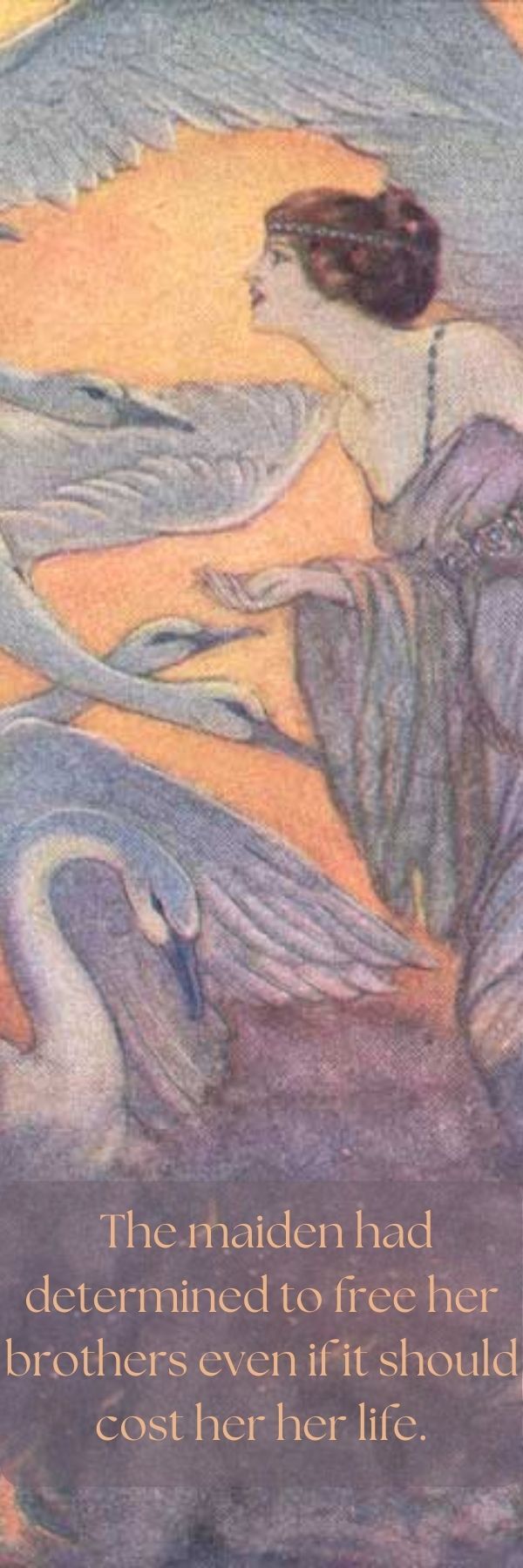
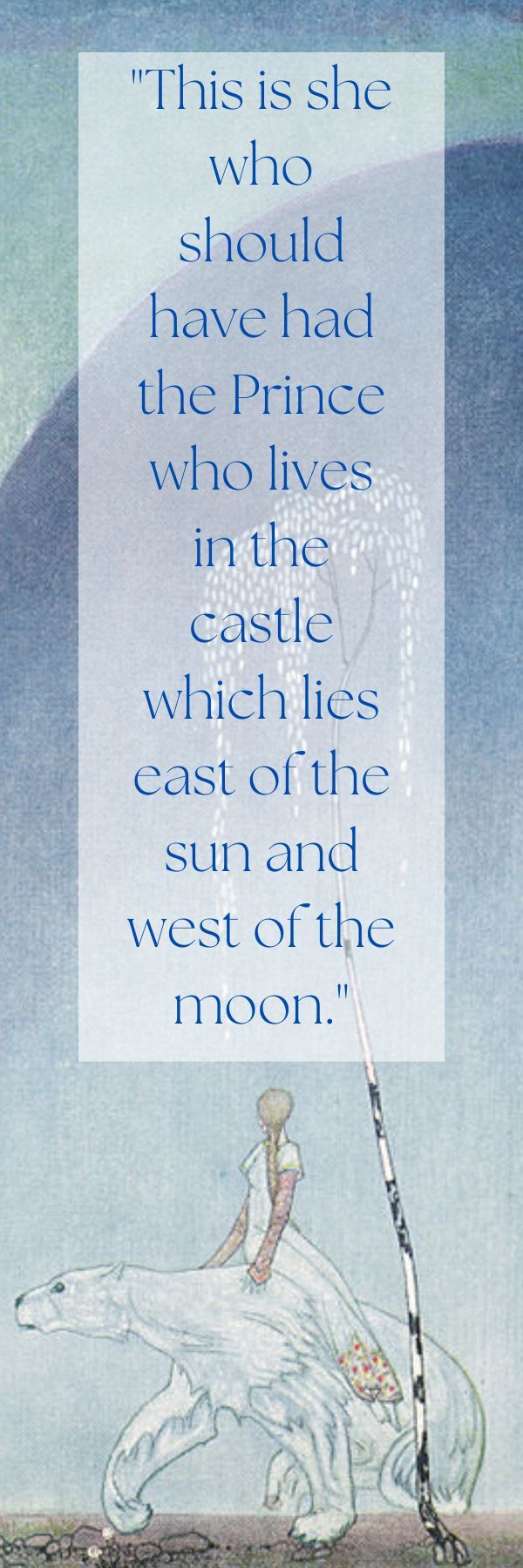
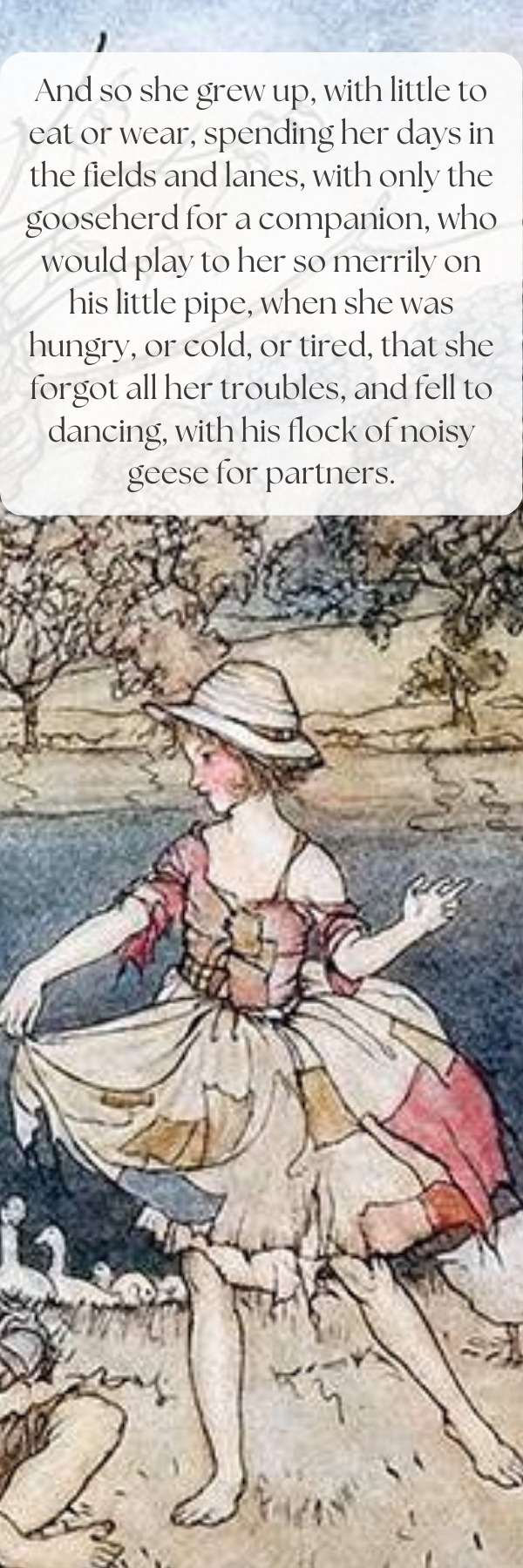
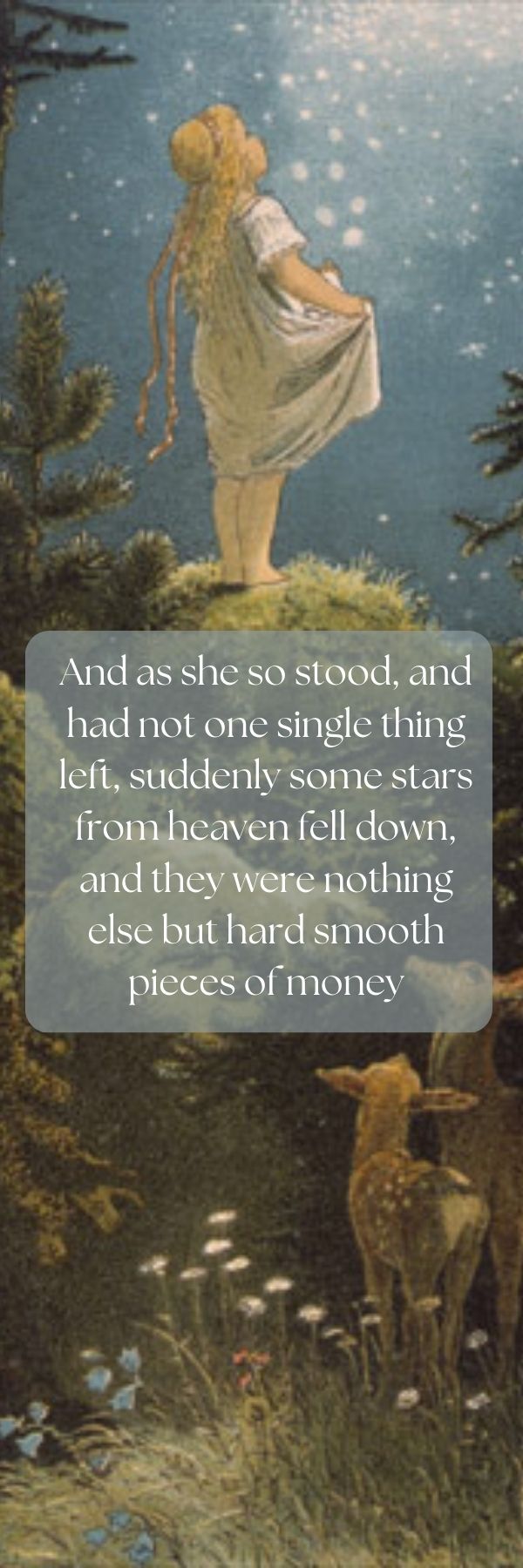
For February's Four Loves Fairy Tale Challenge at @inklings-challenge, I've thrown together some bookmarks featuring illustrations of fairy tales that each feature one of the four loves.
Storge: "The Six Swans" (illustration by Elenore Abbott), for the heroine's efforts to save her brothers
Eros: "East of the Sun, West of the Moon" (illustration by Kay Nielsen), since it features a wife questing to save her husband
Philia: "Tattercoats" (illustration by Arthur Rackham) for the friendship between Tattercoats and the gooseherd
Agape: "The Star Money" (illustration by Victor Paul), since it's about a poor girl who gives away everything to others before receiving her reward.
#fairy tales#four loves fairy tale challenge#inklingschallenge#theme: storge#theme: eros#theme: philia#theme: agape#the six swans#east of the sun west of the moon#tattercoats#the star money
93 notes
·
View notes